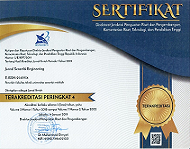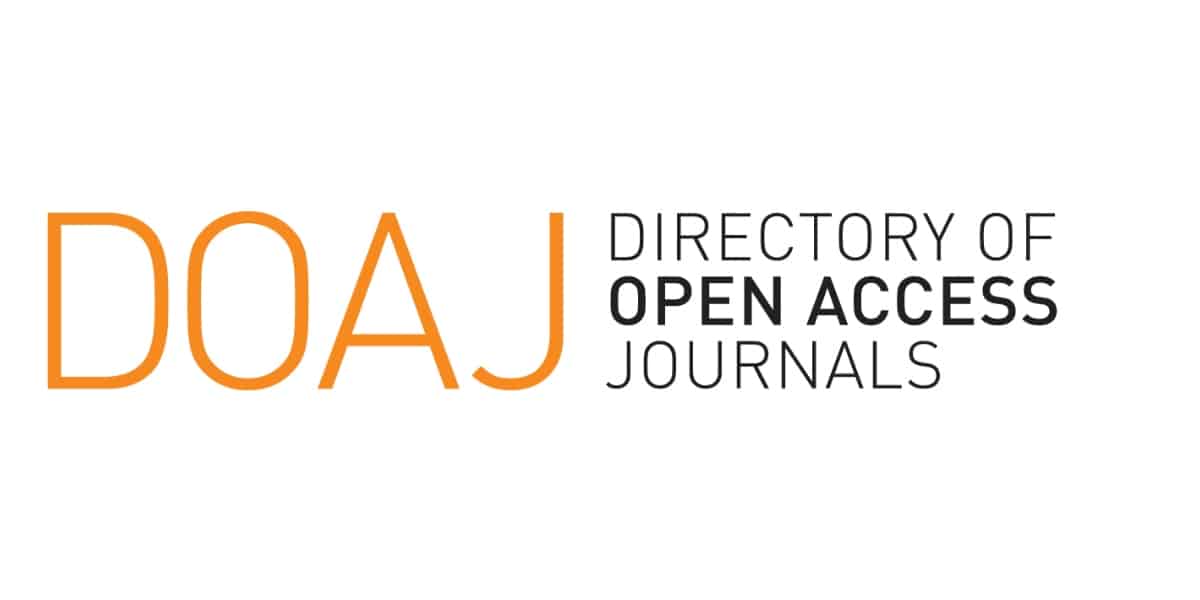Potensi Bahaya Pada Area Kerja Pelabuhan
Keywords:
loading and unloading, HIRADC, risk management, port, controlsAbstract
Port work areas are prone to potential hazards. This study aims to identify hazards and assess risks in the port work area, especially in the operational process of loading and unloading containers using the HIRADC method at five port work area locations in Padang City. The results show that there were 15 medium risk, 13 high risk observed. There is high risk of accidents in liquid bulk, dry bulk and container activity locations such as being crushed by containers, being hit in the container area, dust/noise and sea air pollution due to the process of loading/unloading liquid bulk and dry bulk area. The medium risk levels consist of being hit by lift transport, CO2 gas fumes and being crushed by material transport. To reduce and eliminate potential hazards, risk management is required by identifying and analysing potential hazards, assessing risks and recommending controls, one of which is the Hazard Identification Risk Assessment and Determining Control (HIRADC) method. Recommended controls include preparation of marine pollution control equipment (oil booms), operational maintenance of loading and unloading equipment, installation of signs indicating low to high hazard areas, provision of light fire extinguishers, administrative controls and use of personal protective equipment (PPE).
References
[1] P. Sarah Alvernia, B. Kurniawan, and D. Lestantyo, “Analisis Faktor-Faktor yang Mempengaruhi Keselamatan Pengoperasian Alat Angkat Bongkar Muat Peti Kemas (Studi Kasus di PT. Pelabuhan Tanjung Priok),” Jurnal Kesehatan Masyarakat, vol. 6, no. 4, pp. 353–360, 2018.
[2] D. N. Anggraeni, I. Hardi, and S. Patimah, “Faktor yang Berhubungan dengan Kecelakaan Kerja pada Divisi Operasi dan Perencanaan HSSE PT Pelindo,” Window of Public Health Journal, vol. 4, no. 4, pp. 718–726, 2023.
[3] A. S. Putri, “Analisis Risiko Bahaya pada Proses Penambangan Batu Bara Menggunakan Metode Hazard Identification, Risk Assessment, and Determining Control (HIRADC), Job Safety Analysis (JSA), dan Hazard and Operbaility Study (HAZOP) guna Meminimalkan Kecelakaan Kerja (Studi Kasus: PT. Indominco Mandiri Bontang),” Journal Universitas Muhammadiyah Jakarta, 2022.
[4] J. K. T. Arnold, D. V. D. Doda, and R. H. Akili, “Analisis Risiko Kecelakaan Kerja Pada Pemeliharaan Alat Container Crane dan Rubber Tyred Gantries,” eBiomedik, vol. 8, no. 2, pp. 163–172, 2019.
[5] N. Nugroho, “Penilaian Risiko Kecelakaan Kerja pada Pengoperasian CC (Container Crane) di PT X Surabaya,” The Indonesian Journal of Occupational Safety and Health, vol. 5, no. 2, pp. 101–111, 2016.
[6] A. A. Cholil, S. Santoso, T. R. Syahrial, E. Sinulingga, and R. Nasution, “Penerapan Metode HIRADC sebagai Upaya Pencegahan Risiko Kecelakaan Kerja pada Divisi Operasi Pembangkit Listrik Tenaga Gas Uap,” Jurnal Bisnis & Manajemen, vol. Vol. 20, No. 2, pp. 41–64, 2020.
[7] S. Magdalena, H. M. Mansur, D. E. Kurniasari, and J. Miharja, “Risk Assessment Kesehatan dan Keselamatan Kerja (K3) pada Pekerjaan Bongkar Menggunakan Metode Hazard Identification, Risk Assessment, & Risk Control pada Pelabuhan Ciwandan di Banten,” Quantum Teknika : Jurnal Teknik Mesin Terapan, vol. 4, no. 1, pp. 35–44, Dec. 2022.
[8] R. D. Nurhayati and Y. S. Purnomo, “Analisis Risiko K3 dengan Metode HIRADC pada Industri Pengolahan Makanan Laut di Jawa Timur,” INSOLOGI: Jurnal Sains dan Teknologi, vol. 2, no. 3, pp. 450–461, 2023.
[9] V. Dekanawati, J. Subekti, E. Budi Santoso, and J. Adinata Lie, “Analisa Risiko pada Pekerjaan Perbaikan Kapal dengan Hazard Identification Risk Assessment and Determining Control (HIRADC) di Galangan Kapal Banjarmasin,” National Seminar on Maritime and Interdisciplinary Studies, vol. 3, no. 1, pp. 34–40, 2021.
[10] T. Edwin, R. A. Regia, M. Irfan, and D. Y. Kurniawan, “Analisis Risiko Pada Bagian Produksi Pabrik Pengolah Getah Karet Menggunakan Metode HIRARC (Studi Kasus PT X Kota Padang),” Jurnal Sains dan Teknologi, vol. 18, no. 1, 2019.
[11] D. Alfaret and Fadhilah, “Analisis Resiko Keselamatan Kerja Dengan Metode Hirarc (Hazard Identification, Risk Assessment, And Risk Control) di Tambang Bawah Tanah PT.Nusa Alam Lestari, Desa Salak, Kecamatan Talawi, Kota Sawahlunto, Provinsi Sumatera Barat,” Jurnal Bina Tambang, vol. 6, no. 4, 2021.
[12] U. Rahardja, “Risk Assessment, Risk Identification, and Control in The Process Of Steel Smelting Using the HIRADC Method,” APTISI Transactions on Management (ATM), vol. 7, no. 3, pp. 261–272, 2023.
[13] F. Rahmadhan, “Analisis Risiko Kegiatan Bongkar Muat Petikemas Pada Pekerja Menggunakan Metode HIRARC (Hazard Identification Risik Assessment and Risk Control) (Studi Kasus: PT Pelindo (Persero) Cabang Labuan Bajo),” Universitas Islam Indonesia, Yogyakarta, 2022.
[14] Gatto, Marcel, Meike Wollni, and Matin Qaim. "Oil palm boom and land-use dynamics in Indonesia: The role of policies and socioeconomic factors." Land use policy 46 (2015): 292-303.
Downloads
Published
Issue
Section
License
Copyright (c) 2024 Muhammad Fachri Ridwan, Faiz Hamdi, Tivany Edwin (Author)

This work is licensed under a Creative Commons Attribution 4.0 International License.
















